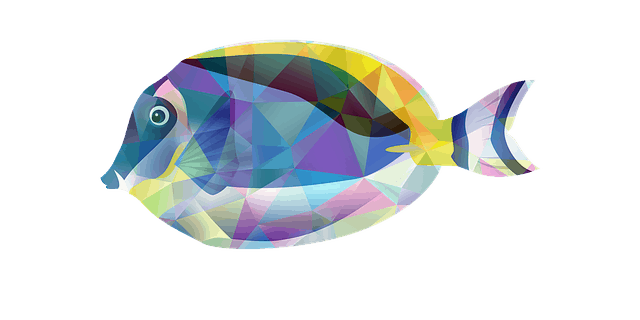GloFish are an aquatic phenomenon not too many people are familiar with. They’re a type of freshwater fish with fluorescent color patterns that appear to glow in the dark! Perhaps I’ve piqued your interest and you now want to learn more about these amazing fish, including where they come from?
GloFish originated as zebrafish in the warm, tropical waters off the coast of South Asia. They’re currently bred from the offspring of fluorescent fish that were genetically modified 20 years ago by scientists in Singapore.
Now that you know where GloFish come from, let’s explore this topic further. In this article, I’ll discuss how GloFish were created and/or genetically modified in the past. I’ll also explain how long they live, what environmental conditions they require, and if they’re good for beginner aquarium hobbyists.
So, if you’re ready to learn more about the intriguing and illusive GloFish, then let’s begin!
How was the First GloFish Created?
Close to 20 years ago, scientists in Singapore set out to create the first ‘glow-in-the-dark’ fish. They modified the genetic code of the zebra danio by injecting it with green fluorescent proteins found naturally in marine jellyfish. The experiment was a success and the first GloFish was created!
How are GloFish Created Today?
GloFish today are born brilliant – meaning they’re not injected or artificially enhanced with color-intensifying dye. Bred from the offspring of the zebrafish that was genetically modified years ago, each GloFish inherits its unique color naturally from its parents and maintains its vibrancy for life.
How were GloFish Genetically Modified?
GloFish were genetically modified decades ago by Asian researchers. The product of their experiments resulted in a fancier, more colorful version of the zebra danio (a type of tropical freshwater fish) using chromosomes taken from other aquatic organisms such as jellyfish, anemones, and sea coral.
How Long does a GloFish Live?
Typically, GloFish can live for 2 or 3 years. If they’re properly cared for and kept in an environment conducive to their natural habitat, GloFish can live even longer – up to 5 years. A relative of the danio, tetra, or barb, GloFish have a lifespan comparable to other common freshwater aquarium fish.
To increase the lifespan of your GloFish, you should keep them in as big a tank as possible. You should also make sure to keep the temperature in the tank consistent and test the water quality regularly. Adding a filter and a heater will also help maintain a healthy aquatic environment.
Why do GloFish Die so Easily?
GloFish are quite sensitive to ammonia spikes in an aquarium. Regular water changes are a must otherwise, they’ll die very quickly. If kept in a small tank where the water is too cold or the pH is too low, they’ll likely not live as long as they could under the proper aquatic conditions.
Begin by testing the water before adding GloFish to the tank. Too much ammonia in the tank will cause fish to die quickly. Add plants to provide beneficial bacteria and eliminate toxic compounds. Hiding places are also a must as they help reduce stress and make GloFish feel safe in their environment.
Can GloFish have Babies?
GloFish aren’t livebearers – meaning they don’t get pregnant or give birth to fry. Rather, the females lay eggs which the males then fertilize. Be wary, however, as GloFish are a patent-brand of fish and cannot be bred or sold legally by aquarium hobbyists.
Only the GloFish company can lawfully reproduce and sell these fish. That said, what happens in the tank, stays in the tank! The only way to actively prevent GloFish from breeding in an aquarium is to purchase all females!
Are GloFish Good for Beginners?
GloFish tend to be fairly hardy, making them a great choice for any home, office, or classroom aquarium. They can adapt to fluctuations in pH levels and eat just about anything from fish flakes and pellets to frozen or freeze-dried food. They’re peaceful nature makes them ideal for hobbyists and beginners alike.
Why are GloFish Illegal in California?
Back in 2003, the state of California made it illegal for aquarium hobbyists to keep GloFish – based on regulations that restrict the possession and/or sale of genetically modified fish. Concern regarding fast-growing biotech salmon (and its implications on health and the environment) was the root cause.
What Kind of Water do GloFish Live in?
GloFish live in tropical, warm water with a temperature ranging from 72 to 80 degrees Fahrenheit. Though they can survive in colder temperatures (62 to 65 degrees Fahrenheit), they’ll fair much better in slightly acidic water with a pH somewhere between 7 and 8.
Since GloFish are type of freshwater fish, they cannot be kept in a saltwater tank. The salt in the water would cause them to dehydrate, shrivel up, and eventually die. Some aquarium hobbyists will add a small amount of salt to their freshwater tank to help keep nitrite levels at bay.
I’d recommend you use a dechlorinating agent such as Tetra Aqua Safe Plus water conditioner (instead of salt) and do regular partial water changes by removing 25% of the water every week. Both will work to reduce toxins in the tank and keep the water safe for GloFish.
Do GloFish Need a Heater?
Being that they’re tropical fish and like warm water, GloFish will need a heater in their aquarium. A temperature of 72 to 80 degrees Fahrenheit will ensure the fish stay healthy and active. While a danio GloFish may be able to survive without a heater, it’s still recommended you have one.
If you don’t have a heater, you can place your GloFish tank near a window. The sunlight will help warm up the water while providing the fish with the light they need. Be careful, however, as this can cause rapid fluctuations in temperature as well as increased algae growth, neither of which are good for fish.
Do GloFish Need Light to Survive?
Most fish, no matter the species, need light to survive. GloFish should be kept in a place with sunlight or under a lamp (if you don’t have an aquarium light) for at least 12 hours a day. The remaining 12 hours should consist of darkness as this helps simulate the natural day/night cycle.
Keeping a light on all the time can cause stress to GloFish. They need periods darkness to slow down their metabolism and rest or ‘sleep. As well, too much light can result in an overgrowth of algae, which is not only unsightly but also dangerous for fish.
A good investment would be to purchase a blue ambient light for your GloFish aquarium. It mimics moonlight and won’t affect the natural day/night cycle of the fish or plants in the tank. It’ll also helps illuminate your GloFish in the evening so you can enjoy viewing them hours longer.
What Light is Best for GloFish?
Blue LED lights are great for GloFish tanks. Their brighter than traditional aquarium lights and are more suitable for daytime viewing. A black light, on the other hand, will make GloFish colors pop however, they’re not as bright or as good for viewing.
Your best bet would be to invest in a combination white and blue LED light. A good light to check out online through Amazon are the Nicrew Aquarium Lights. The inline LED controllers allow you to adjust the light intensity and are ideal for freshwater fish-only or fish-and-plant tanks.
What GloFish Can Live Together?
GloFish are a type of schooling fish and prefer to be kept in groups of 5 or more with others of their own kind. To prevent breeding, it’s recommended that you keep all females or just a single male with 3 or 4 females. GloFish barbs, danios, and tetras can be kept together however, barbs can be more aggressive.
Possible tankmates for GloFish include the following:
- cories
- dwarf cichlids
- gouramis
- guppies
- loaches
- mollies
- platies
- plecos
- rasboras
- swordtails
Conclusion
To conclude, GloFish originated in warm, tropical freshwater near the coast of South Asia. They began as zebrafish and were genetically modified by scientists in Singapore 20 years ago. GloFish are born brilliant – meaning they are bred from the offspring of fluorescent fish – not injected with color-illuminating dye.
I hope this article has provided you with the information you seek regarding GloFish. Thanks for reading and good luck with your aquarium hobby.
Related Posts
Super Cool Fish for a 10 Gallon Tank
Can a GloFish Live with Normal Fish?






